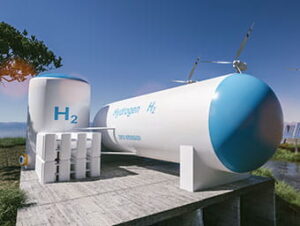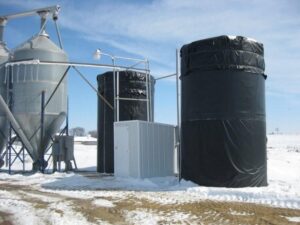The Home Heating Industry and the environment are closely connected, impacting each other in significant ways. As our need for warmth during colder months drives demand for heating solutions, the industry’s methods and materials play a pivotal role in determining their environmental impact. The Home Heating Industry and the environment have come under increasing scrutiny due to concerns over carbon emissions, energy consumption, and the depletion of natural resources. As consumers and policymakers grow more aware of climate change’s dangers, the demand for sustainable home heating options has surged. Check our shop for the best heating cables and order now!
Traditionally, the Home Heating Industry and the environment have been in conflict, with fossil fuel-based heating methods contributing significantly to greenhouse gas emissions. These systems rely on oil, gas, or coal, which release high levels of carbon dioxide when burned, thereby exacerbating global warming. However, the industry is now evolving, embracing cleaner technologies like electric heat pumps, solar thermal systems, and biomass boilers. This shift reflects a growing commitment to sustainability and a recognition of the Home Heating Industry and the environment as an inseparable pair.
Innovation is a key driver in reconciling the Home Heating Industry and the environment. New technologies focus on energy efficiency, reducing carbon footprints, and utilizing renewable energy sources. Governments worldwide are also implementing stricter regulations and incentives, encouraging companies to innovate and consumers to adopt more sustainable heating solutions. Contact us for more data!
Ultimately, the relationship between the Home Heating Industry and the environment is dynamic and complex. As the industry continues to adapt, it faces the dual challenge of meeting consumer demand while minimizing its ecological footprint. The path forward will require continued innovation, investment, and collaboration to ensure that home heating solutions contribute to a sustainable future for our planet.
Visit our blog page for the newest content about industrial products and household products in the field of the radiant floor heating cables!
- What is Home Heating and Environmental Impact?
- What is Traditional Heating Systems and Their Environmental Footprint?
- What is Energy Consumption in Home Heating
- What is Carbon Emissions from Home Heating Systems?
- What are Renewable Energy Sources for Home Heating?
- What are Advancements in Energy-Efficient Heating Technologies?
- What are Government Policies and Regulations on Home Heating Emissions?
- What are Environmental Benefits of Smart Heating Solutions?
- What is Consumer Awareness and Green Choices in Home Heating?
- What are Future Trends in Eco-Friendly Home Heating?
These are the questions that will be answered in this article. So lets continue!
Table of Contents
- Introduction: Home Heating and Environmental Impact
- Traditional Heating Systems and Their Environmental Footprint
- Energy Consumption in Home Heating
- The Growing Popularity of Biomass Heating Systems
- The Role of Smart Thermostats in Reducing Energy Consumption
- Carbon Emissions from Home Heating Systems
- Renewable Energy Sources for Home Heating
- Advancements in Energy-Efficient Heating Technologies
- Government Policies and Regulations on Home Heating Emissions
- Environmental Benefits of Smart Heating Solutions
- Consumer Awareness and Green Choices in Home Heating
- Future Trends in Eco-Friendly Home Heating
- FAQs
- Conclusion
Traditional Home Heating Industry and the environment Footprint
The Home Heating Industry and the environment are closely linked, particularly when considering the traditional methods of heating that have been dominant for decades. Conventional heating systems, such as those that rely on oil, natural gas, and coal, are known for their significant environmental footprint in Home Heating Industry and the environment. The combustion of these fossil fuels releases substantial amounts of carbon dioxide, a greenhouse gas that contributes to global warming. As a result, the Home Heating Industry and the environment are often in conflict, with traditional methods posing considerable challenges to reducing emissions and achieving sustainability goals. Related blog: (Hydronic underfloor heating)
In addition to carbon emissions, the Home Heating Industry and the environment are affected by other pollutants released by conventional heating systems, including sulfur dioxide, nitrogen oxides, and particulate matter. These pollutants can lead to poor air quality, acid rain, and various health issues for humans and wildlife. Moreover, the extraction and transportation of fossil fuels used in home heating also result in habitat destruction, water pollution, and oil spills, further exacerbating the negative impact of the Home Heating Industry and the environment.
Despite these concerns, traditional heating methods remain widespread due to their established infrastructure, relatively low cost, and high efficiency in some cases. However, the growing awareness of climate change and the urgent need to reduce carbon footprints have led to increased scrutiny of the Home Heating Industry and the environment. Policymakers and environmental groups are advocating for a transition to cleaner, renewable heating sources, such as solar thermal, biomass, and electric heat pumps. Did you visit underfloor heating straps in our shop?
The future of the Home Heating Industry and the environment depends on how quickly and effectively the industry can reduce its reliance on fossil fuels and embrace sustainable alternatives. Addressing this challenge requires innovation, regulatory support, and a shift in consumer behavior to ensure that the Home Heating Industry and the environment can coexist more harmoniously.
Energy Consumption in Home Heating
Energy consumption in home heating plays a critical role in the relationship between the Home Heating Industry and the environment. As one of the largest energy consumers in residential buildings, home heating significantly impacts greenhouse gas emissions and overall energy demand. The way energy is used for heating directly affects the ecological balance, making the v a central concern for those aiming to reduce carbon footprints and mitigate climate change. These should be held in radiant floor heating too!
Most traditional home heating systems rely on fossil fuels like natural gas, oil, or coal, which are energy-intensive and produce high levels of carbon dioxide. As a result, the Home Heating Industry and the environment often find themselves at odds, with heating practices contributing to air pollution, resource depletion, and increased global warming. Even electric heating systems, depending on the source of the electricity, can contribute to significant emissions if the power comes from non-renewable sources.
To address the concerns surrounding the Home Heating Industry and the environment, energy efficiency has become a key focus. Upgrading insulation, using programmable thermostats, and installing energy-efficient windows can reduce the amount of energy required to heat a home. Additionally, transitioning to more sustainable heating options, such as heat pumps, solar panels, or biomass systems, can help minimize the environmental footprint. This shift is crucial to ensure the Home Heating Industry and the environment can be more compatible in the future. Check the quality and long term support of heating cables.
Government regulations and incentives are playing a vital role in driving the shift towards greener heating solutions. By promoting renewable energy and energy-efficient technologies, policymakers aim to balance the needs of the Home Heating Industry and the environment. Ultimately, reducing energy consumption in home heating is not only a matter of conserving resources but also a significant step towards creating a sustainable future where the Home Heating Industry and the environment can coexist more harmoniously.
The Growing Popularity of Biomass Heating Systems
In recent years, biomass heating systems have gained substantial traction as an eco-friendly alternative within the Home Heating Industry and the environment. These systems utilize organic materials such as wood pellets, agricultural residues, and other biomass sources to generate heat, presenting a sustainable solution to conventional heating methods. This shift towards biomass heating reflects a broader trend of increasing environmental consciousness and a desire to reduce carbon footprints.
Biomass heating systems offer several environmental benefits that align with the goals of the Home Heating Industry and the environment. Unlike fossil fuels, which release significant amounts of carbon dioxide and other pollutants, biomass is considered carbon-neutral. The carbon dioxide released during combustion is roughly equivalent to the amount absorbed by the plants during their growth, creating a closed carbon cycle in Home Heating Industry and the environment. This characteristic helps mitigate the greenhouse gas emissions associated with traditional heating methods, thereby contributing positively to the Home Heating Industry and the environment.
The growing popularity of biomass heating systems is driven by advancements in technology and increased awareness of their environmental benefits. Modern biomass boilers and stoves are designed to be highly efficient, with features such as automated fuel feeding and precise temperature controls. These innovations make biomass heating systems more user-friendly and cost-effective, enhancing their appeal within the Home Heating Industry and the environment.
Another factor contributing to the rise of biomass heating systems is the increasing availability of renewable biomass resources. As the Home Heating Industry and the environment shift toward more sustainable practices, there is a growing emphasis on sourcing biomass from local and renewable sources. This trend reduces the need for long-distance transportation of fuels, further lowering the environmental impact associated with heating. Good related example could be thermostats and their role in home heating.
Biomass heating systems also offer economic advantages that resonate with both consumers and the Home Heating Industry and the environment. While the initial investment in biomass systems can be higher than traditional heating options, the long-term savings on fuel costs can offset this expense. Biomass fuels are often more affordable and stable in price compared to fossil fuels, providing financial relief to homeowners while promoting economic stability in the renewable energy sector.
In addition to their environmental and economic benefits, biomass heating systems contribute to local economies. By supporting the production and distribution of biomass fuels, these systems create jobs and stimulate economic activity in rural and agricultural areas. This localized approach aligns with the Home Heating Industry and the environment’s broader goal of fostering sustainable development and reducing reliance on imported energy sources.
However, the growing popularity of biomass heating systems is not without challenges. Proper management and maintenance are essential to ensure that these systems operate efficiently and with minimal emissions. The Home Heating Industry and the environment must address these challenges through rigorous standards and best practices to maximize the benefits of biomass heating.
Furthermore, the sustainability of biomass heating systems depends on responsible sourcing and land management practices. Ensuring that biomass resources are harvested sustainably is crucial to prevent deforestation and protect ecosystems. The Home Heating Industry and the environment must collaborate with policymakers and industry stakeholders to establish guidelines that promote sustainable biomass production and use. Check out the parallel silicone heating cable.
In conclusion, the growing popularity of biomass heating systems represents a significant advancement in the Home Heating Industry and the environment. By offering a renewable, carbon-neutral alternative to traditional heating methods, biomass systems contribute to reduced greenhouse gas emissions, economic benefits, and local job creation. As technology continues to improve and sustainable practices are adopted, biomass heating systems will play an increasingly important role in achieving a more environmentally friendly and economically sustainable future.
The Role of Smart Thermostats in Reducing Energy Consumption
Smart thermostats are revolutionizing the Home Heating Industry and the environment by providing an innovative way to optimize energy use and reduce carbon footprints. These devices offer advanced features, such as learning your schedule, adjusting temperatures based on real-time weather data, and providing remote control via smartphones. By intelligently managing heating patterns, smart thermostats ensure that homes are only heated when necessary, significantly lowering energy consumption and, consequently, reducing greenhouse gas emissions.
One of the critical ways smart thermostats contribute to the Home Heating Industry and the environment is through energy efficiency. Studies have shown that smart thermostats can reduce heating and cooling costs by up to 20%. This reduction not only translates to lower utility bills for homeowners but also results in less demand for energy production, thereby decreasing the overall environmental impact of energy generation, which is often reliant on fossil fuels. You can find related data in: A brief history of home heating.
Furthermore, smart thermostats play a crucial role in enhancing consumer awareness about their energy usage. These devices provide detailed reports on heating patterns, energy consumption, and potential savings. Such insights help homeowners make informed decisions, leading to more environmentally friendly practices and reduced energy wastage. The Home Heating Industry and the environment benefit from this heightened awareness as it drives consumers toward greener and more efficient heating solutions.
In addition, smart thermostats support the integration of renewable energy sources into the Home Heating Industry and the environment. For example, they can adjust heating patterns based on the availability of solar or wind energy, ensuring that homes utilize clean energy whenever possible. This capability not only helps in reducing reliance on non-renewable energy sources but also promotes sustainable practices within the industry. Some new product to the industry: heat tracing cables.
Overall, smart thermostats are a vital tool in the effort to create a more sustainable Home Heating Industry and the environment. By reducing energy consumption, encouraging greener practices, and supporting renewable energy integration, these devices represent a significant step toward a more environmentally conscious future.
Carbon Emissions from Home Heating Systems
Carbon emissions from home heating systems are a major concern in discussions about the Home Heating Industry and the environment. Traditional heating methods, such as those using natural gas, oil, and coal, are significant sources of greenhouse gases. These systems release large quantities of carbon dioxide (CO₂) into the atmosphere, contributing to climate change and making the relationship between the Home Heating Industry and the environment increasingly problematic. Some interesting product: the best underfloor heating film.
The combustion process in fossil fuel-based heating systems is the primary cause of these emissions. For example, natural gas furnaces, though cleaner than oil or coal systems, still produce CO₂ and methane, another potent greenhouse gas. The Home Heating Industry and the environment are also impacted by the energy used to extract, process, and transport these fuels, which adds to the overall carbon footprint. This dual impact underscores the challenges in aligning the Home Heating Industry and the environment with global sustainability goals.
To mitigate the adverse effects of carbon emissions, the Home Heating Industry and the environmentare moving toward adopting cleaner, more energy-efficient technologies. Electric heat pumps, which use renewable electricity, produce significantly fewer emissions compared to fossil fuel-based systems. Similarly, biomass heating systems, when sourced sustainably, offer a lower-carbon alternative. However, the widespread adoption of these technologies requires substantial investment and policy support to encourage the shift.
Governments worldwide are recognizing the critical link between the Home Heating Industry and the environment and are implementing stricter regulations to curb carbon emissions. Carbon pricing, rebates for energy-efficient appliances, and incentives for renewable energy adoption are some of the measures being put in place. These policies aim to reduce the carbon footprint of home heating and promote a more sustainable alignment between the Home Heating Industry and the environment.
Ultimately, reducing carbon emissions from home heating systems is essential for achieving global climate targets. The continued evolution of the Home Heating Industry and the environment relationship will depend on how quickly the industry can transition to low-carbon solutions, ensuring a greener future for both homeowners and the planet.
Renewable Energy Sources for Home Heating Industry and the environment
The adoption of renewable energy sources is crucial for improving the relationship between the Home Heating Industry and the environment. Traditional heating systems, reliant on fossil fuels, have long been associated with high carbon emissions and negative environmental impacts. However, renewable energy options like solar, geothermal, biomass, and wind energy offer more sustainable alternatives that can significantly reduce the ecological footprint of home heating. Integrating these renewable sources is key to aligning the Home Heating Industry and the environment more closely with global sustainability goals.
Solar energy, for example, can be harnessed through solar thermal panels, which convert sunlight into heat for domestic water and space heating. This technology provides a clean, abundant source of energy that drastically reduces carbon emissions, thereby benefiting the Home Heating Industry and the environment. Similarly, geothermal heating systems use the Earth’s natural heat, offering a highly efficient and low-emission alternative to traditional fossil fuel systems. Geothermal systems can cut energy consumption by up to 70%, demonstrating a positive alignment between the Home Heating Industry and the environment. Related blog: Industry and underfloor heating systems
Biomass is another renewable source gaining traction. It involves using organic materials, like wood pellets or agricultural waste, to generate heat. When managed sustainably, biomass can be a carbon-neutral option, as the CO₂ released during combustion is offset by the CO₂ absorbed by the plants during their growth in Home Heating Industry and the environment. This makes it a promising option for balancing the needs of the *Home Heating Industry and the environment*.
Governments and policymakers are increasingly promoting renewable energy sources through incentives, subsidies, and regulations. These measures encourage consumers and businesses to shift towards sustainable options, thus fostering a healthier balance between the Home Heating Industry and the environment.
Ultimately, the widespread adoption of renewable energy sources is essential to transforming the Home Heating Industry and the environment dynamic. As technology advances and renewable options become more accessible and affordable, they offer a viable path forward for reducing carbon footprints and ensuring a sustainable future. The shift towards renewables will play a pivotal role in ensuring that the Home Heating Industry and the environment can coexist in harmony.
Advancements in Energy-Efficient Heating Technologies
Recent advancements in energy-efficient heating technologies are redefining the relationship between the Home Heating Industry and the environment. Traditional heating systems, such as oil, gas, and electric resistance heaters, have long been criticized for their high energy consumption and substantial carbon footprints. However, new technologies are emerging to improve efficiency, reduce emissions, and create a more sustainable balance between the Home Heating Industry and the environment. Check out the blog: The health benefits of underfloor heating systems.
Heat pumps are at the forefront of these advancements. Using electricity to transfer heat rather than generate it, heat pumps are up to three times more efficient than traditional heating systems. They work by extracting heat from the air, ground, or water, and can be used for both heating and cooling, making them a versatile solution for the Home Heating Industry and the environment. Moreover, when paired with renewable electricity, heat pumps produce virtually no carbon emissions, significantly improving their environmental footprint.
Smart thermostats and zoned heating systems are also making a significant impact. These technologies allow homeowners to control their heating systems with precision, ensuring energy is used only where and when needed. This reduces overall energy consumption, aligning the Home Heating Industry and the environment more closely with sustainability goals. Innovations like smart thermostats can learn user preferences and adjust settings automatically, optimizing energy use and reducing waste. Like one used in drain-line heating cable.
Another key development is the increased use of energy storage solutions, such as thermal batteries, which store excess energy generated by renewable sources for later use. This advancement helps stabilize energy supply and demand, further improving the compatibility of the Home Heating Industry and the environment. Additionally, improved insulation materials and energy-efficient building designs contribute to reduced heat loss, allowing heating systems to work more efficiently.
As these technologies continue to evolve, they offer great potential for reducing the environmental impact of home heating. By embracing these advancements, the Home Heating Industry and the environment can move towards a future where comfort and sustainability coexist. The ongoing innovation in energy-efficient technologies promises to redefine the Home Heating Industry and the environment relationship, creating a more sustainable and resilient pathway for the years ahead.
Government Policies and Regulations on Home Heating Emissions
Government policies and regulations play a crucial role in shaping the relationship between the Home Heating Industry and the environment. As concerns about climate change and air quality grow, policymakers worldwide are enacting measures to reduce emissions from home heating systems. These regulations aim to minimize the environmental impact of heating practices, ensuring that the Home Heating Industry and the environment can coexist more sustainably.
One of the key approaches involves setting strict limits on the carbon emissions produced by home heating systems. Many countries have introduced efficiency standards that require new heating equipment to meet minimum energy performance criteria. These standards encourage the development and adoption of cleaner, more efficient technologies, fostering a closer alignment between the Home Heating Industry and the environment. Additionally, governments are phasing out older, high-emission heating systems, such as coal and oil boilers, and promoting the transition to low-carbon alternatives like heat pumps and solar thermal systems. More titles: household underfloor heating
Subsidies, rebates, and tax incentives are also effective tools for promoting energy-efficient heating solutions. By offering financial incentives for homeowners to upgrade to greener systems, governments help reduce the initial cost barrier, driving widespread adoption of sustainable technologies. This approach enhances the relationship between the Home Heating Industry and the environment by encouraging innovation and investment in renewable energy sources.
Carbon pricing mechanisms, such as carbon taxes or cap-and-trade systems, are another strategy to reduce emissions from the Home Heating Industry and the environment. By putting a price on carbon emissions, these policies create economic incentives for companies and consumers to choose cleaner heating options. This not only reduces greenhouse gas emissions but also stimulates the development of new technologies and practices that support a sustainable future.
Public awareness campaigns and information initiatives are essential for educating consumers about the environmental impacts of their heating choices and promoting behavior change. By informing the public about the benefits of energy-efficient and renewable heating systems, governments help bridge the gap between the Home Heating Industry and the environment.
In summary, government policies and regulations are critical in transforming the Home Heating Industry and the environment into a more harmonious relationship. Through strict standards, incentives, and public engagement, these measures drive the shift towards a low-carbon future, ensuring that the Home Heating Industry and the environment are aligned with global sustainability goals.
Environmental Benefits of Smart Heating Solutions
Smart heating solutions are revolutionizing the Home Heating Industry and the environment by offering new ways to reduce energy consumption and lower carbon emissions. These advanced technologies, such as smart thermostats, zoned heating, and machine-learning systems, optimize home heating efficiency, helping to create a more sustainable balance between the Home Heating Industry and the environment. By intelligently managing how and when homes are heated, these solutions significantly reduce the energy required, which benefits both homeowners and the planet. Check out the information in Open space heating and heating cables.
Smart thermostats, for instance, learn the heating patterns and preferences of the occupants, automatically adjusting the temperature to reduce energy waste. This dynamic adjustment is crucial for aligning the Home Heating Industry and the environment since it helps lower the overall energy demand and reduces greenhouse gas emissions. In addition, these thermostats can be programmed to heat only occupied rooms or reduce temperatures during specific periods, further minimizing unnecessary energy use and enhancing the relationship between the Home Heating Industry and the environment. The environment friendly product: Heating cable with inactive copper.
Zoned heating systems also contribute significantly to improving the Home Heating Industry and the environment dynamic. By dividing a home into separate zones, these systems allow for tailored heating in different areas based on need. This approach ensures that no energy is wasted on heating unoccupied rooms, leading to significant reductions in energy consumption and emissions. The result is a more sustainable footprint for the Home Heating Industry and the environment.
Moreover, smart heating solutions often integrate with renewable energy sources, such as solar panels or wind turbines, maximizing the use of clean energy. This integration plays a vital role in reducing reliance on fossil fuels and aligns with global goals for the Home Heating Industry and the environment. By using locally generated renewable energy, these systems decrease carbon footprints and contribute to the fight against climate change.
Smart heating solutions also provide valuable data analytics, allowing homeowners and utility companies to monitor energy usage patterns and identify opportunities for further reductions. This data-driven approach fosters a more informed and efficient Home Heating Industry and the environment, supporting better decision-making and driving continuous improvements in sustainability.
The widespread adoption of smart heating solutions is crucial for enhancing the Home Heating Industry and the environment. These technologies enable significant energy savings, reduce emissions, and promote cleaner energy sources. Ultimately, smart heating solutions offer a powerful means of improving the alignment between the Home Heating Industry and the environment, paving the way for a greener and more sustainable future. As more homes incorporate these technologies, the benefits to both the Home Heating Industry and the environment will continue to grow, contributing to a healthier planet for future generations.
FAQS
1. What are smart heating solutions?
Smart Home Heating Industry and the environment solutions refer to advanced technologies and systems that use sensors, algorithms, and connectivity to optimize heating efficiency in homes. They include smart thermostats, heating controls, and integrated home automation systems designed to improve comfort and reduce energy consumption.
2. How do smart heating solutions save energy?
Smart heating solutions save energy by intelligently adjusting heating settings based on factors like occupancy patterns, external weather conditions, and user preferences and friendly with Home Heating Industry and the environment. They can automatically lower temperatures when rooms are unoccupied or adjust heating schedules to avoid heating unused spaces, thereby reducing energy waste.
3. Are smart heating solutions expensive to install?
While the initial cost of smart Home Heating Industry and the environment solutions can vary depending on the system’s complexity and features, they are generally considered cost-effective due to long-term energy savings. Many utility companies offer rebates or incentives for installing energy-efficient smart thermostats, making them more affordable for homeowners and also for Home Heating Industry and the environment.
4. Can smart heating solutions work with renewable energy sources?
Yes, smart heating solutions can integrate seamlessly with renewable energy sources such as solar panels and heat pumps. They can optimize heating schedules to maximize the use of renewable energy when it’s available, further reducing reliance on fossil fuels and lowering carbon emissions.
5. Are smart heating solutions easy to use?
Modern smart heating systems are designed with user-friendliness in mind. They often feature intuitive interfaces, mobile apps, and voice control capabilities that make it easy for homeowners to monitor and adjust heating settings remotely. Manufacturers provide customer support and online resources to help users optimize their smart Home Heating Industry and the environment experience.
Conclusion
Smart Home Heating Industry and the environment solutions offer significant environmental benefits by improving energy efficiency, reducing carbon emissions, enhancing control and monitoring, supporting grid stability, and promoting long-term sustainability. These technologies represent a proactive approach to addressing climate change and environmental degradation while optimizing comfort and reducing operating costs for homeowners and also helping Home Heating Industry and the environment. As smart heating solutions continue to evolve and become more accessible, their role in achieving a sustainable energy future becomes increasingly critical. Embracing these innovations can lead to a greener, healthier planet for current and future generations.






